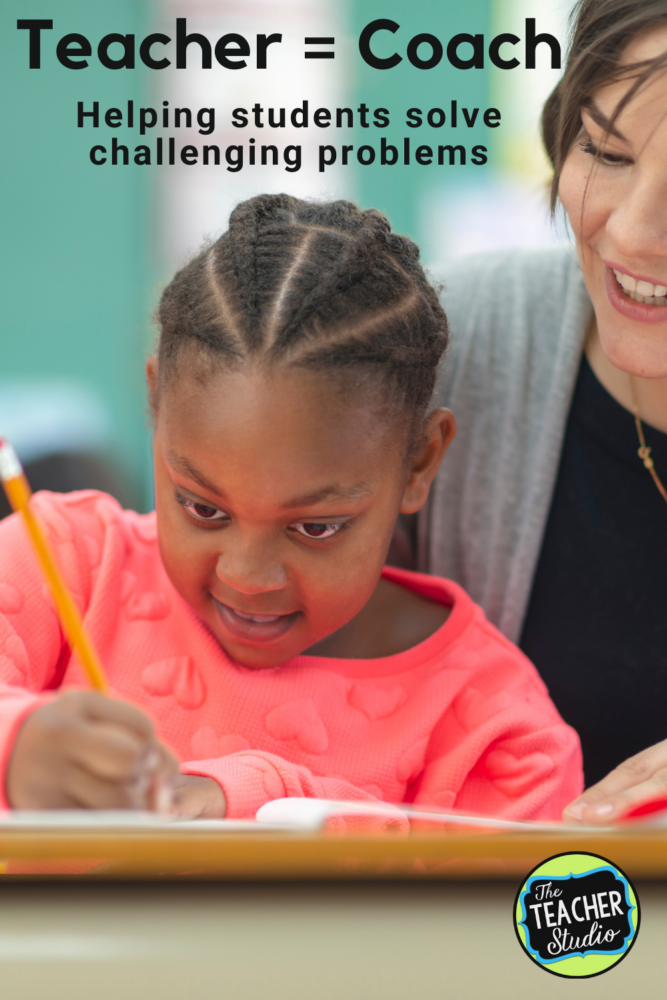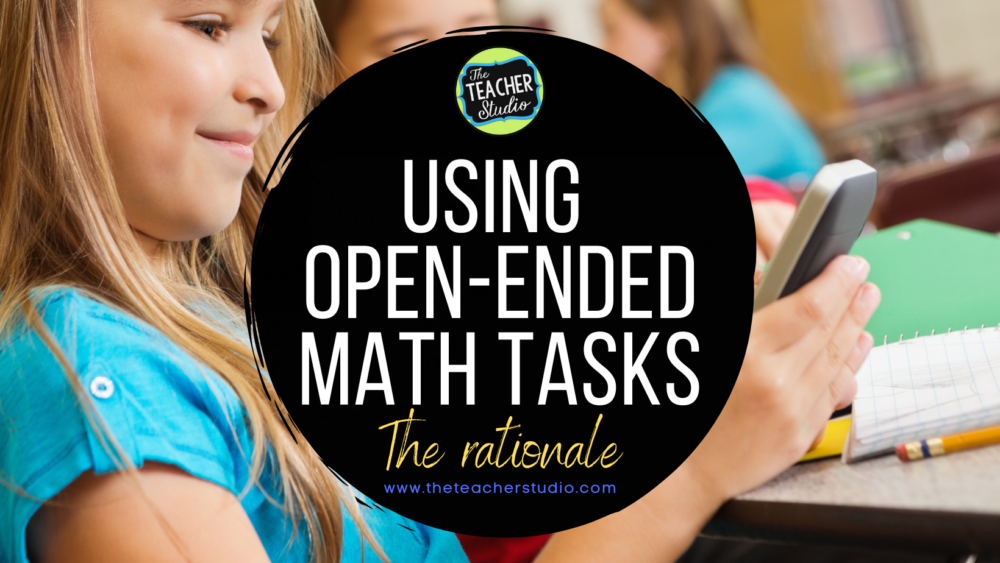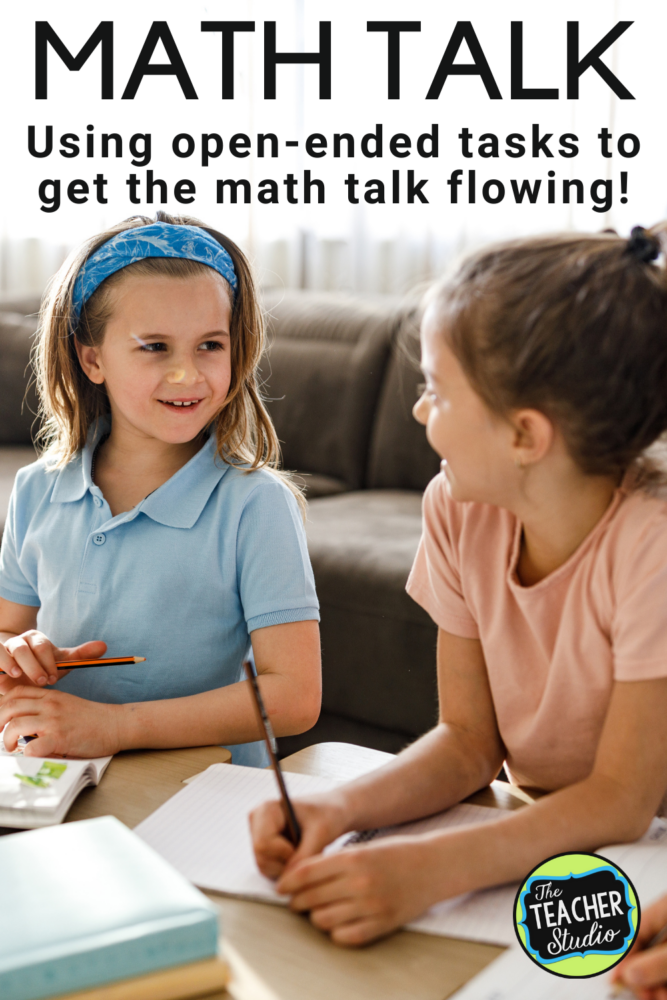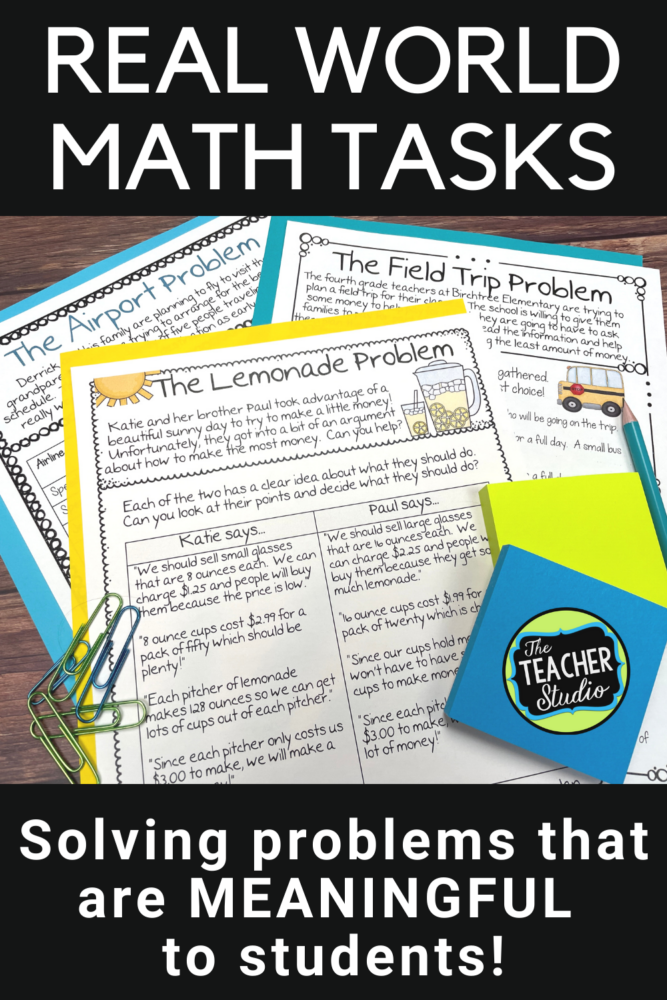Open-Ended Math Tasks! Are you using enough rich math tasks in your class? Check out this post with a ton of reasons (OK, TWELVE of them!) why we should be incorporating more of these open-ended problem-solving experiences. Check out all the amazing things we can accomplish with them!
Gets students tackling problems that have more than one solution
So often we give students problems where there truly is one solution. They get very accustomed to “filling in the box” and seeking the right answer rather than digging in and finding the complexity of the math. Finding quality open-ended math tasks can help them see that math is far more intricate than merely finding a quick answer!
Helps students learn to make sense of a complex problem
Indeed, one of the Standards for Mathematical Practice involves students tackling a problem to determine what it’s asking. If we consistently give students simple word problems that accompany our units, we take away all that thinking. For example, when I teach a unit on multiplication if I only present word problems that involve multiplication–I’ve taken the thinking away. Using more complex tasks forces students to think about what type of math they need to do and to dig in to get started.
Allows students to choose from multiple strategies or entry points
Similarly, these open-ended math tasks are perfect for giving students an entire arsenal of strategies–many of which can work in any given situation. When there are multiple steps and lots of information, there are different places for students to dig in and get started. Similarly, students can move back and forth between different parts of the task as they work and made progress toward understanding. When given a task like designing a new library display, students can collect all the different pieces of information in the task and CHOOSE what makes sense to get them started. They may start with a sketch or an estimate or any number of other strategies, but there is a LOT to grab onto as they begin.
Encourages math talk and discourse
This is pretty self-explanatory! When you assign a rich math task, there is a lot to talk about. When we ask students to tackle them, it only makes sense to give them “talk time”. This is truly one of the best parts about using quality problems. The opportunity to share thinking and help get classmates “unstuck” is invaluable.
Allows students to see real-world applications of math
We’ve all seen the memes making fun of word problems.
“If Lois buys 16 watermelons…”
“There are 693 kittens…”
(You get my drift.)
Quality open-ended tasks are MEANT to be real-world math. Students are asked to solve real-world problems. They may be working with a budget. They may need to make decisions about “how many” or “which ones”. Students may need to design something. THIS is math. When you find math problems that mimic students’ real lives, it’s priceless. Our students eat lunch in the cafeteria. They go on field trips. They have sleepovers. This is engaging math.
Helps students see the interconnectedness of math concepts
Like I mentioned before, teaching math in isolation takes away the thinking and deep understanding. By using rich math tasks, students are forced to examine ALL the math they know as they look for ways to accomplish their goal. They may need to add and subtract. They may need to make a chart. Sometimes they may see that drawing an array can help them solve a multiplication problem. In a great task, they may need to do all of these things for one problem! So often, we fail to give students enough credit for being able to do this kind of work, and we do them a disservice when we don’t give them those opportunities.
Immerses students in the Standards for Mathematical Practice along with the math content
As we rush to work through the endless list of standards for our grade levels, we cannot forget to include the math practice standards in our plans. When you read through these 8 standards, you can see the role open-ended math challenges play. In fact, every single one of those standards can be met when we provide students with this type of math work.
Provides an excellent forum for partner and small group work
As I mentioned before, providing students with these rich tasks encourages accountable talk. They are perfect for partner and small group work. In fact, using these to explicitly teach students HOW to work together, how to coach each other, and how to encourage each other is invaluable. Building relationships and adopting a growth mindset is a critical piece of learning productive struggle. Learning to struggle and overcome challenges TOGETHER is a key part of our math coaching.
Naturally differentiate as students take “just right” approaches to solving them
Unlike more simplistic math problems, open-ended tasks can naturally differentiate. Some students may want access to calculators. Some may draw pictures. There may be a time when groups of students choose to use manipulatives to model their math thinking. As teachers coach, they can give math “hints” as needed to students based on their needs. I have used countless math tasks where I have assigned the same task to ALL students but have provided differing levels of support as they tackle them. Remember, students can still work on problem solving skills and strategies if they haven’t yet mastered algorithms.
A perfect example is a back-to-school shopping challenge where students have a budget and a set list of things to purchase. There are multiple things to consider–from the number of items required to the different prices at different stores. Should we save this rich task for students ONLY when they have mastered the additional algorithm with decimals? Of course not. We can have students work in teams, give calculators or other tools–or anything that will make the task more accessible. This is an example of providing QUALITY education to all students and is a powerful way to build math confidence and self-esteem.
Allows teachers to serve as coaches as they watch and interact with students as they solve them
This is big. Rather than teachers being the lecturer or “provider of knowledge”, these tasks naturally lend themselves to teachers serving as coaches. So what?
- We learn so much about our students’ thinking as we watch.
- We have the power to differentiate on the fly as needed.
- Some students benefit from having more direct teacher contact while others thrive on being more independent.
- Learning to ask good questions to get students “unstuck” is so much more powerful than merely “showing them how”.
- Teachers can truly maximize their time to reach WHO needs help, WHEN they need help.
- We can help show students how to coach each other, making a room full of places for students to get coaching and guidance.
- We can notice when “a ha” moments happen and recognize them.
- This coaching time is perfect for finding work samples to share and discuss
- And so much more!
Encourages creative thinking and strategies
I think this point is being made throughout this post, but I’ll reiterate it here. When there is more than one solution, there are countless solution paths. When there are multiple solution paths, students see the value in thinking differently and there is not one “right” way to do business. What a powerful message!
To make it even more powerful, make sure you build in time to SHARE strategies. Whether you have students showcase their work under a document camera, share their ideas in small groups, project their work, or hang it up–celebrate the amazing solutions students come up with! Even more valuable? Make sure students know that the final answer is less important than the process to get there.
Do we want students to realize that we value their thinking? You bet. Learning to think independently and creatively is another one of those life lessons that will extend far beyond your math class. It’s how REAL problems get solved.
Encourages students (and teachers) to focus on the PROCESS over the solution
As I stated before, of course, we want students to do math accurately and get correct solutions. The truth is, when students tackle these complex tasks, there are lots of places where errors can occur. If we stress getting a correct answer over the complex processes, all value is lost. The value in these tasks is the process of understanding the problem, choosing strategies, modifying strategies when needed, selecting models or tools to use, estimating, reviewing answers, organizing work, and so much more.
When students know that WE value their hard work as much as correct answers, it’s so freeing for them! They see that we value their thinking and strategies and even their mistakes. This takes away any compulsion to get the answer from others or to shut down due to frustration.
As you can see, the power of these tasks is obvious. Unfortunately, very few math programs provide enough of them to really help students develop these skills. Because of that, one role I have taken on as a curriculum designer is to try to fill this gap by creating tasks like this for different age levels.
Convinced? Give some a try!
CLICK HERE to grab a free guide that summarizes this blog post AND tells exactly what skills some of my open-ended tasks cover.
CLICK HERE to see a bundle of tasks for grades 2/3 (or for beginning problem solvers in grade 4)
Looking for tasks for experienced grade 3 problem solvers and grades 4/5? CLICK HERE!
Finally, looking for some even more in-depth tasks that are differentiated and have tons of extensions? These tasks can last multiple days and can be used with your entire class or with small enrichment groups or for fast finishers. CHECK THEM OUT HERE!
(NOTE: All tasks are AVAILABLE IN PRINT AND DIGITAL FORMATS)







